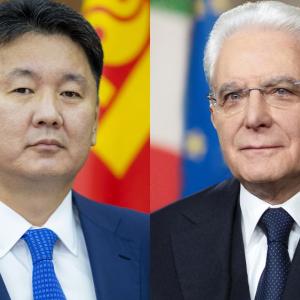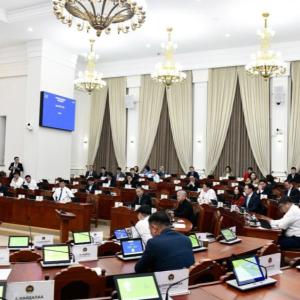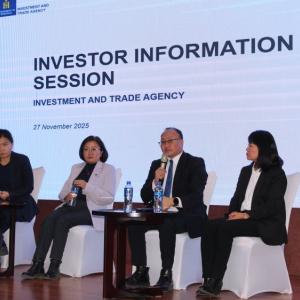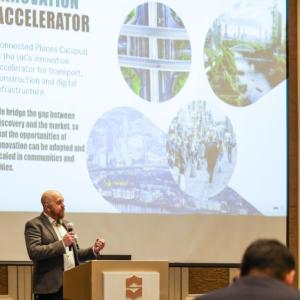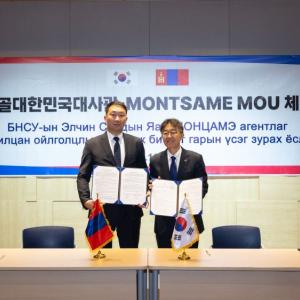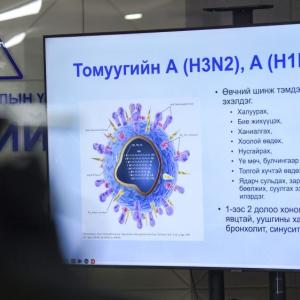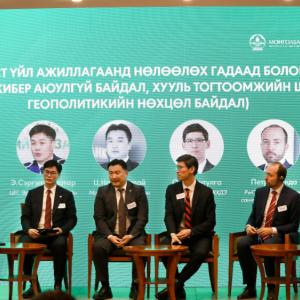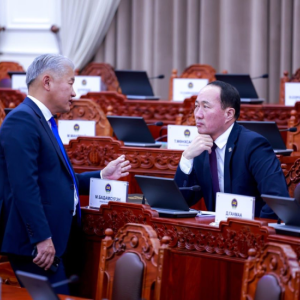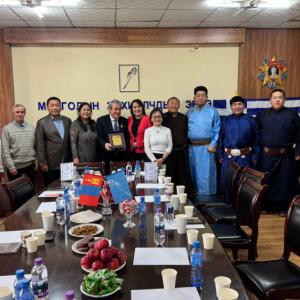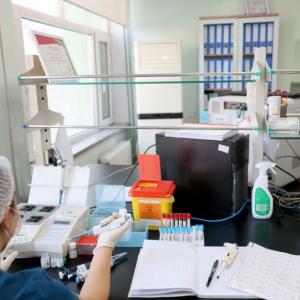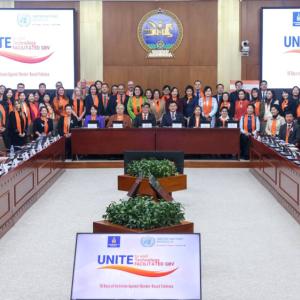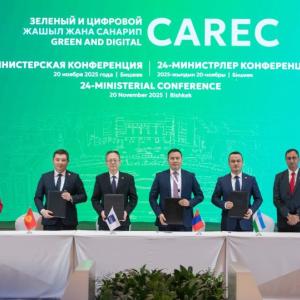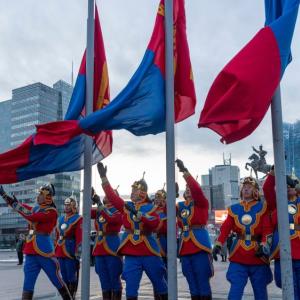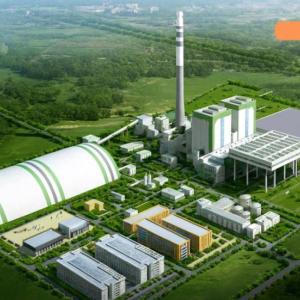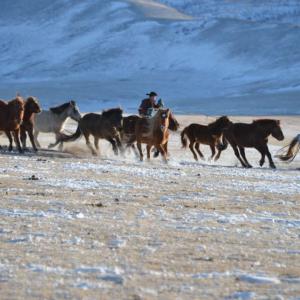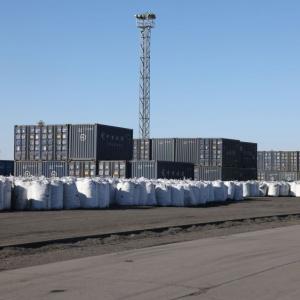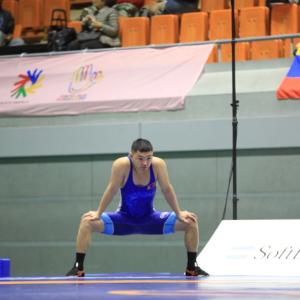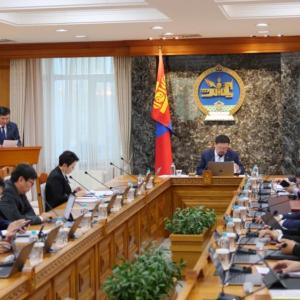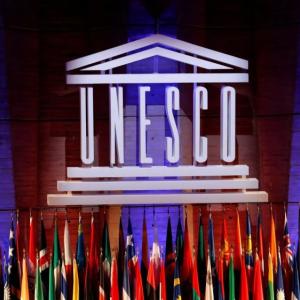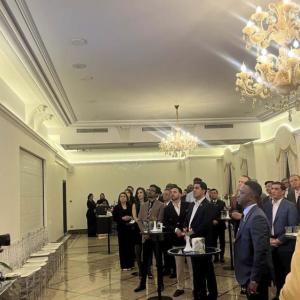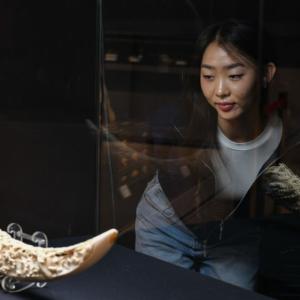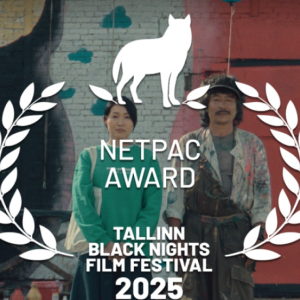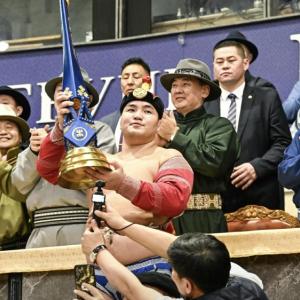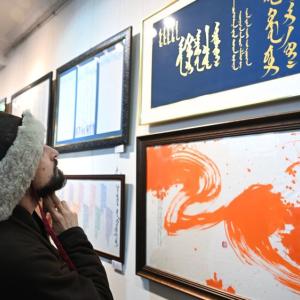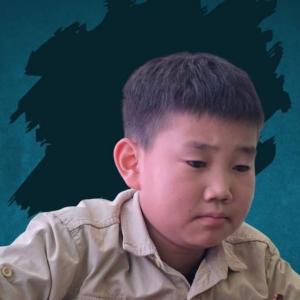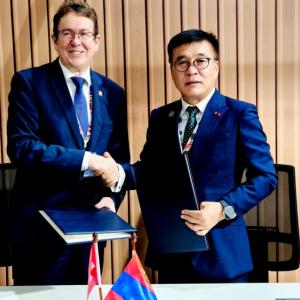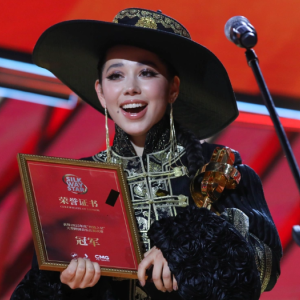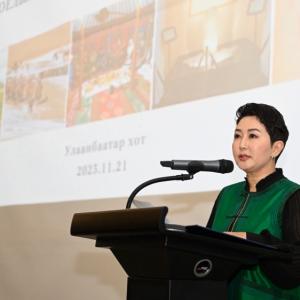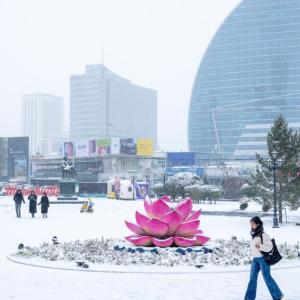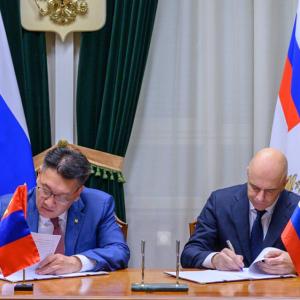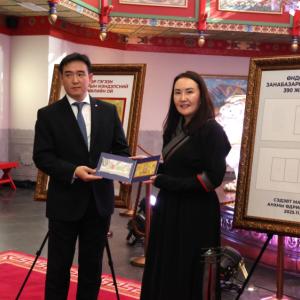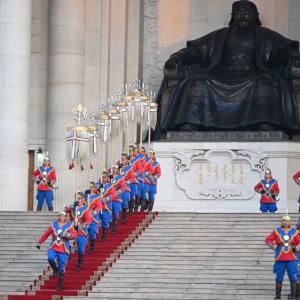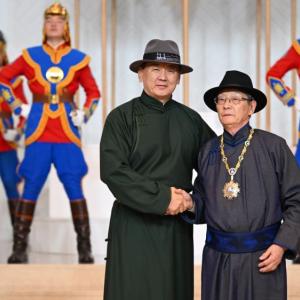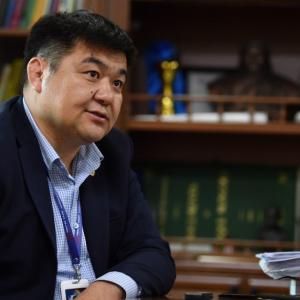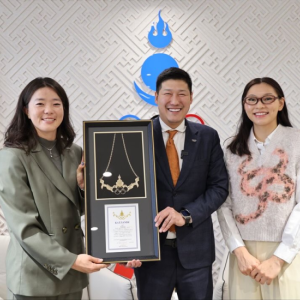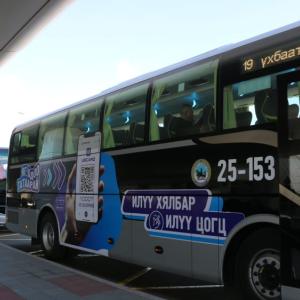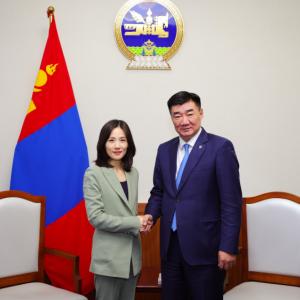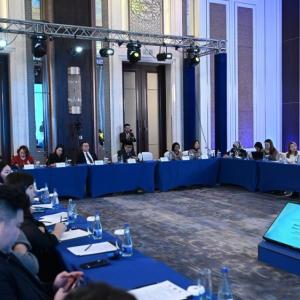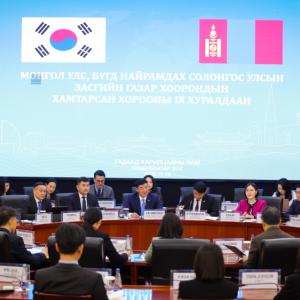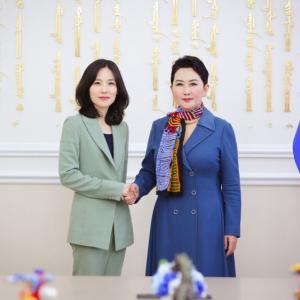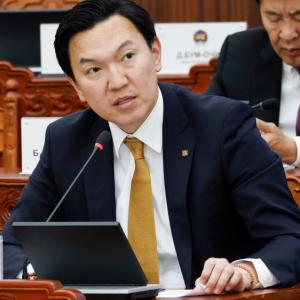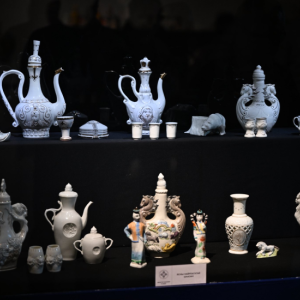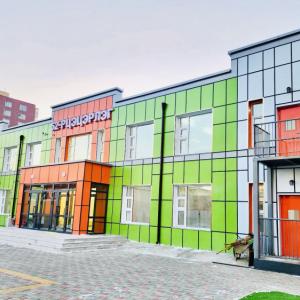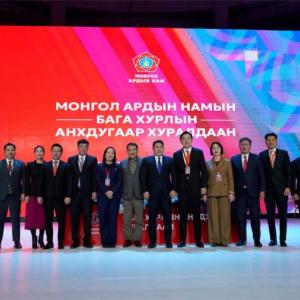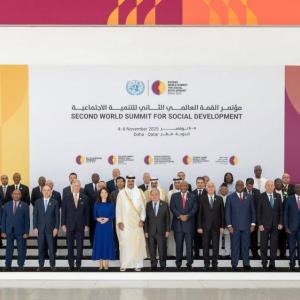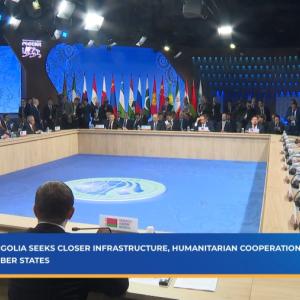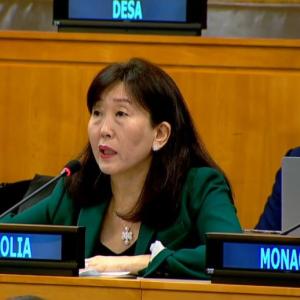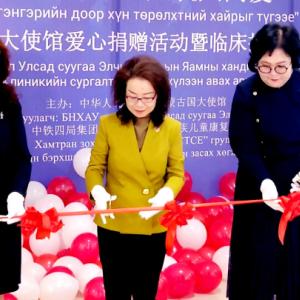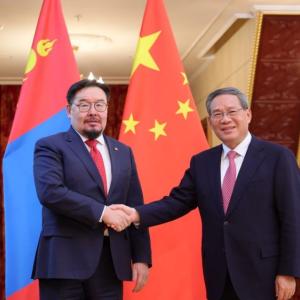Ed Jager: Mongolia’s biggest strength is its people, particularly the youth
The Mongol Messenger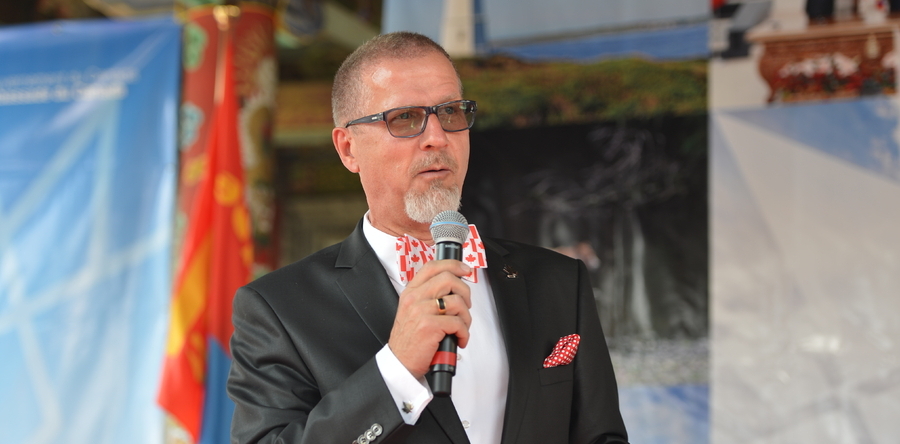
Outgoing Ambassador of Canada to Mongolia discusses bilateral ties
“As our Prime Minister has often said, this is what Canadians do. We step up”, remarked H.E Ed Jager, the Ambassador of Canada to Mongolia at a Canada Day Reception on June 30. “One way Canada is stepping up is by deepening our multilateral engagement through partnerships with countries such as Mongolia to advance peace, security, development and human rights”.
Celebration of Canada’s 150th anniversary of Confederation is one of the topics covered in this interview as Ambassador Ed Jager sat with us on Monday afternoon, July 3 to reflect on a number of important developments in Mongolia-Canada relations and his insightful opinion of Mongolia. After taking the office as an Ambassador Extraordinary and Plenipotentiary of Canada to Mongolia in March 2015, he is wrapping up his 2-year posting this summer.
The Ambassador expressed his pleasure at the Canada Day celebration, and said, “Getting a reception on a Friday afternoon for 300 and plus people is never an easy chore, but my team outdid themselves”. After challenging his team to find a bit different and interesting venue for the reception, he was pleased to find “Choijin Lama Temple” museum. “That temple is almost as old as Canada, and it signifies Mongolia. So, the visuals of combining Canada and Mongolia in that way were so strong and striking that it made it well worth the risks that were involved, including the rain which thankfully held off”, he noted.
“We are taking all of 2017 to celebrate Canada’s 150th anniversary of Confederation”, he answered as I inquired what other events are to be held in the margins of Canada 150. The Embassy held a kick off reception in February at the “Zanabazar” museum, and has since done a number of different events, including sponsoring concerts, planting trees in the National Park and the Ambassador giving speech to university students.
As the celebration continues, some musical events and essay contests are expected to take place in this fall. “The maple trees we planted in May will have grown up a bit, and we plan to build a sitting area around those trees so that we see a Canada grove in the National Park”, the Ambassador said.
Throughout the year, the Embassy holds a variety of different Canada 150 events, with the intention of reaching out to Canada’s friends and partners, Canadians in the country and average Mongolians who don’t move in the diplomatic circles, so that they learn a little bit more about Canada and have a better understanding of why it’s important for Canada and Mongolia to maintain a good relationship.

Canadian companies show increased interest in Mongolia
Mongolia and Canada established diplomatic ties in 1973, and Canada is one of the major investors to Mongolia. When asked about the latest developments in bilateral relationship, Ambassador Ed Jager divided his answer in three parts.
Firstly, there is a political element. Canada’s official participation in the Ulaanbaatar Dialogue on Northeast Asian Security was the most recent development. “For the first time, we had a Canadian official attending the meeting, and I think that’s an important step forward in terms of our support to Mongolia’s efforts in these areas”.
Ambassador Jager highlights the bilateral political cooperation of the last two and a half years of his tenure, including Canada’s support of Mongolia at the UN Human Rights Council and its leadership role in the Freedom Online Conference and Community of Democracies. “These are the elements of relationship where we have been supportive and will continue to be supportive”.
Another important part of our bilateral relationship is commerce. The Ambassador says that the latest development in bilateral commercial relationship has been the growth of Canadian companies that are more interested in Mongolia. “They are looking at what’s happening in the mining sector, the progress of Oyu Tolgoi, the IMF package and the stability and promises for Mongolia. And they are saying, “Yes, Mongolia is a better place for us to look at; let’s go and investigate the possibilities of investment and cooperation”.
The Ambassador links the strong development in commercial ties in the last half year to the Canada-Mongolia Agreement on the Promotion of Protection of Investment (FIPA) which was put into force in March. “It has been something that we’ve been talking about for 10 years. It may even go back to 2004 when President N.Bagabandi paid a visit to Canada”.
“The agreement is important because it symbolizes the two countries’ desire to continue working together to promote and protect investment. It is not only important for Canadian investors, but also for other investors. I think the fact that Mongolia is being seen as wanting to sign these kinds of agreements, and prepared to offer such guarantees is encouraging for other investors”.
And finally, the third element is development cooperation. “We have been working with Mongolia closely, particularly for the last four years, to provide some assistance in areas that we have expertise in - with one of them being regulations of the extractives sector. We’ve worked to find ways to better regulate the extractives sector so that Mongolians profit from the mining, oil and gas explorations being done in this country”.
The Ambassador also touched upon Canada’s efforts to encourage Mongolia’s political process. “On one hand, there are projects dealing with the fight against corruption, on the other hand, we are working on projects to find ways to make political process more inclusive”.“Mongolia is a democracy of 25 years during which one sex dominated. For the last couple of years, we’ve worked hard to help Mongolian women understand the benefits and challenges of being part of the political process. Therefore, we were pleased to see a record number of women being elected to Parliament last year. Number of them had gone to training courses that were sponsored by the Canadian Government”, he pointed out. “I am confident that my colleagues and my successor will continue to build on these developments in bilateral relationship”.
Mongolia and Canada work together in agriculture, construction, fibre and financial sectors whereas mining remains to be the main sector of cooperation between the two countries. Therefore, I inquired into the Ambassador’s observation of Mongolia Mining Forum at Prospectors and Developers Association of Canada (PDAC) 2017 which took place in March in Toronto. Having participated in the forum since 2015, Ambassador Jager said that he had observed a weak Mongolian presentation in 2015, and a considerable movement forward in the Mongolian conversation in 2016.
He proceeded to indicate that the 2017 forum exhibited a lot more hope for Mongolia with the new government, sense of stability, movement forward and expectations of an IMF program. “By far, the 2017 program was the most positive and useful platform for foreign investors. To me, the outcome of the Mongolian Forum was a heightened sense of expectations for this government and Mongolia and an increased sense of optimism about Mongolia’s future. I saw a real sense in the room that people saw an opportunity to work with and in Mongolia, and wanted to come back”.
2018 will mark the 45th anniversary of diplomatic relations between Mongolia and Canada. “We’ve come a long way since 1973, and the future of bilateral ties is just getting better”, the Ambassador said. Mongolia’s relationship with Canada got stronger after 1990 as it did with other members of the western world. “You can see a strong progress over the last 20 years in terms of the level of engagement, the types of engagement and the degree to which we work together”.
Ambassador Ed Jager is the third resident Ambassador of Canada to Mongolia. When asked to review his performance, he answers, “I have done my best, and I go home with some sense that bilateral ties have moved forward in the last three years”.
“Mongolia has the ability to grasp its potential”
As a bridge between the international community in and out of the country and Mongolia, the Mongol Messenger has recently begun a new column called ‘Ambassador Insights’ where heads of foreign diplomatic missions in Mongolia reflect on their experiences and perspectives on Mongolia. Answering the regular questions of the column, Ambassador Ed Jager shared his interesting thoughts and lasting impressions of Mongolia in this section of the interview.
“I didn’t know a lot about Mongolia prior to coming here. I must admit that my idea of Mongolia was pretty sketchy”, he says. He only knew that Mongolia was a place far away and cold. “I didn’t have an appreciation for how wonderful the Mongolian people were”.
Looking back upon his first day in the country which was February 4, 2015, he remembers being met by officials and coming to his new home. “I remember how welcoming the folks from protocol and the MFA were. I was quite amazed by how modern the city looked, and how busy things were”.
The Ambassador’s first impression was that ‘Mongolia was cold’. “Then I realized it wasn’t much colder than Ottawa”, he said. He also told me of his initial findings that Ulaanbaatar was a safe city, and that Mongolia is beautiful as he went to the countryside to see Mongolia outside of Ulaanbaatar. “So, the first couple of weeks were pretty fascinating days”, he recalls.
Then I sought to know what in Ambassador Jager’s opinion the best thing about Mongolia is. “It’s the Mongolian people who are heartwarming, welcoming, frank, intelligent, hardworking and who learn quickly. I think they make the future of Mongolia”. He explained, “The single biggest strength of Mongolia is its people, particularly youth, if you ask me. In the Mongolian youth, I see a bright talent and a desire to learn to make a better Mongolia which is so impressive. When Mongolians go and study abroad, they come back because they want to apply what they learned in other countries here”.
He shared with the Mongol Messenger a new word he learned in Mongolia which is repat. “I have always heard the word expat in other countries. And Mongolians who go abroad for short to medium term repatriate and come home are called repats. I have met a lot of repats who have had great opportunities to learn how things are done differently in other countries and who come back and say ‘We can make a better Mongolia’. I think that’s Mongolia’s best asset”.
When it comes to Mongolian culture, Ambassador Jager believes that it finds the best reflection in music. “I love Mongolian music which is why we had the ethnic band Husugtun play at the Canada Day Reception”. After hearing Husugtun live for the first time two years ago at a Naadam-related event at the Choijin Lama Temple Museum, he became a fan. Having heard other ethnic bands like Altai Khangai, Mongolian Morin Khuur and long songs, the Ambassador keeps a couple of CDs at home that he listens to from time to time. “To me, Mongolian music voices the history and challenges of life in Mongolia. I think, it is the most advocative form of Mongolian culture”.
He says he prefers music to other forms of art, and especially folk music. Nevertheless, he has developed a habit of going to the Opera and Ballet Theater of Mongolia. “I know that’s not Mongolian music per se, but it’s Mongolian talent. Seeing some of the western standards being interpreted by magnificent Mongolian artists at such a wonderful venue as the Opera House has been a real joy for me and my wife Kathy”, he told us.

The Ambassador defines the capital city of Mongolia as an eminently lively city. “It’s a place where you can walk around and go to different places on foot if you live in the center of the city. I wish it weren’t as polluted as it is in winter time. Clearly, pollution is a challenge Mongolia has to face, in a way more officially than it has done so far. But I would characterize Ulaanbaatar as a city that is very pleasant and easy to live in”.
Having lived in Ulaanbaatar for over two and a half years, he surely must have made tons of memories to remember Mongolia by. I asked which memory he holds most dear, and he says it will be the friends he made in Mongolia. Will he miss the countryside, riding horse in -15 degrees, riding a bike through the hills of Terelj National Park, and climbing up to the top of Bogd Khan Mountain? Yes. But, he will miss his Mongolian friends the most. “I hope that they all come to visit us in Ottawa”, he said.
Then I sought his opinion on how friendly the Mongolian society is to foreigners. “I personally have always felt welcome by Mongolians. From my own personal experience, I have a sense that Mongolians are welcoming to foreigners”. But he acknowledged that there are other people with different experiences. “Generally speaking, I get a strong sense that Mongolians welcome foreigners. I think, there’s an increasing acceptance by the younger generation to welcome foreigners, and see that they bring not only investments, but ideas and cultural exchanges”.
“Mongolia has its own strengths and weaknesses”, he answered to my question on comparison of Mongolia with rest of the international community. “Mongolia is a country that has a lot of potential and has the ability to grasp that potential. I am convinced that if I come back to this country in 10-15 years, it will be a more prosperous, less corrupt and more competently governed country”. “I am confident that it will become a country that Canada wants to work more closely with, whether it is here in Mongolia or at the international bodies”.
In Ambassador Jager’s opinion, Mongolia can work towards a better future by focusing on education and investment in its youth. “That’s the only long term investment that makes sense. It is important to put more emphasis on making sure that students and children are well-educated and use of the native intelligence that is clearly in Mongolians”.
“As our Prime Minister has often said, this is what Canadians do. We step up”, remarked H.E Ed Jager, the Ambassador of Canada to Mongolia at a Canada Day Reception on June 30. “One way Canada is stepping up is by deepening our multilateral engagement through partnerships with countries such as Mongolia to advance peace, security, development and human rights”.
Celebration of Canada’s 150th anniversary of Confederation is one of the topics covered in this interview as Ambassador Ed Jager sat with us on Monday afternoon, July 3 to reflect on a number of important developments in Mongolia-Canada relations and his insightful opinion of Mongolia. After taking the office as an Ambassador Extraordinary and Plenipotentiary of Canada to Mongolia in March 2015, he is wrapping up his 2-year posting this summer.
The Ambassador expressed his pleasure at the Canada Day celebration, and said, “Getting a reception on a Friday afternoon for 300 and plus people is never an easy chore, but my team outdid themselves”. After challenging his team to find a bit different and interesting venue for the reception, he was pleased to find “Choijin Lama Temple” museum. “That temple is almost as old as Canada, and it signifies Mongolia. So, the visuals of combining Canada and Mongolia in that way were so strong and striking that it made it well worth the risks that were involved, including the rain which thankfully held off”, he noted.
“We are taking all of 2017 to celebrate Canada’s 150th anniversary of Confederation”, he answered as I inquired what other events are to be held in the margins of Canada 150. The Embassy held a kick off reception in February at the “Zanabazar” museum, and has since done a number of different events, including sponsoring concerts, planting trees in the National Park and the Ambassador giving speech to university students.
As the celebration continues, some musical events and essay contests are expected to take place in this fall. “The maple trees we planted in May will have grown up a bit, and we plan to build a sitting area around those trees so that we see a Canada grove in the National Park”, the Ambassador said.
Throughout the year, the Embassy holds a variety of different Canada 150 events, with the intention of reaching out to Canada’s friends and partners, Canadians in the country and average Mongolians who don’t move in the diplomatic circles, so that they learn a little bit more about Canada and have a better understanding of why it’s important for Canada and Mongolia to maintain a good relationship.

Canadian companies show increased interest in Mongolia
Mongolia and Canada established diplomatic ties in 1973, and Canada is one of the major investors to Mongolia. When asked about the latest developments in bilateral relationship, Ambassador Ed Jager divided his answer in three parts.
Firstly, there is a political element. Canada’s official participation in the Ulaanbaatar Dialogue on Northeast Asian Security was the most recent development. “For the first time, we had a Canadian official attending the meeting, and I think that’s an important step forward in terms of our support to Mongolia’s efforts in these areas”.
Ambassador Jager highlights the bilateral political cooperation of the last two and a half years of his tenure, including Canada’s support of Mongolia at the UN Human Rights Council and its leadership role in the Freedom Online Conference and Community of Democracies. “These are the elements of relationship where we have been supportive and will continue to be supportive”.
Another important part of our bilateral relationship is commerce. The Ambassador says that the latest development in bilateral commercial relationship has been the growth of Canadian companies that are more interested in Mongolia. “They are looking at what’s happening in the mining sector, the progress of Oyu Tolgoi, the IMF package and the stability and promises for Mongolia. And they are saying, “Yes, Mongolia is a better place for us to look at; let’s go and investigate the possibilities of investment and cooperation”.
The Ambassador links the strong development in commercial ties in the last half year to the Canada-Mongolia Agreement on the Promotion of Protection of Investment (FIPA) which was put into force in March. “It has been something that we’ve been talking about for 10 years. It may even go back to 2004 when President N.Bagabandi paid a visit to Canada”.
“The agreement is important because it symbolizes the two countries’ desire to continue working together to promote and protect investment. It is not only important for Canadian investors, but also for other investors. I think the fact that Mongolia is being seen as wanting to sign these kinds of agreements, and prepared to offer such guarantees is encouraging for other investors”.
And finally, the third element is development cooperation. “We have been working with Mongolia closely, particularly for the last four years, to provide some assistance in areas that we have expertise in - with one of them being regulations of the extractives sector. We’ve worked to find ways to better regulate the extractives sector so that Mongolians profit from the mining, oil and gas explorations being done in this country”.
The Ambassador also touched upon Canada’s efforts to encourage Mongolia’s political process. “On one hand, there are projects dealing with the fight against corruption, on the other hand, we are working on projects to find ways to make political process more inclusive”.“Mongolia is a democracy of 25 years during which one sex dominated. For the last couple of years, we’ve worked hard to help Mongolian women understand the benefits and challenges of being part of the political process. Therefore, we were pleased to see a record number of women being elected to Parliament last year. Number of them had gone to training courses that were sponsored by the Canadian Government”, he pointed out. “I am confident that my colleagues and my successor will continue to build on these developments in bilateral relationship”.
Mongolia and Canada work together in agriculture, construction, fibre and financial sectors whereas mining remains to be the main sector of cooperation between the two countries. Therefore, I inquired into the Ambassador’s observation of Mongolia Mining Forum at Prospectors and Developers Association of Canada (PDAC) 2017 which took place in March in Toronto. Having participated in the forum since 2015, Ambassador Jager said that he had observed a weak Mongolian presentation in 2015, and a considerable movement forward in the Mongolian conversation in 2016.
He proceeded to indicate that the 2017 forum exhibited a lot more hope for Mongolia with the new government, sense of stability, movement forward and expectations of an IMF program. “By far, the 2017 program was the most positive and useful platform for foreign investors. To me, the outcome of the Mongolian Forum was a heightened sense of expectations for this government and Mongolia and an increased sense of optimism about Mongolia’s future. I saw a real sense in the room that people saw an opportunity to work with and in Mongolia, and wanted to come back”.
2018 will mark the 45th anniversary of diplomatic relations between Mongolia and Canada. “We’ve come a long way since 1973, and the future of bilateral ties is just getting better”, the Ambassador said. Mongolia’s relationship with Canada got stronger after 1990 as it did with other members of the western world. “You can see a strong progress over the last 20 years in terms of the level of engagement, the types of engagement and the degree to which we work together”.
Ambassador Ed Jager is the third resident Ambassador of Canada to Mongolia. When asked to review his performance, he answers, “I have done my best, and I go home with some sense that bilateral ties have moved forward in the last three years”.
“Mongolia has the ability to grasp its potential”
As a bridge between the international community in and out of the country and Mongolia, the Mongol Messenger has recently begun a new column called ‘Ambassador Insights’ where heads of foreign diplomatic missions in Mongolia reflect on their experiences and perspectives on Mongolia. Answering the regular questions of the column, Ambassador Ed Jager shared his interesting thoughts and lasting impressions of Mongolia in this section of the interview.
“I didn’t know a lot about Mongolia prior to coming here. I must admit that my idea of Mongolia was pretty sketchy”, he says. He only knew that Mongolia was a place far away and cold. “I didn’t have an appreciation for how wonderful the Mongolian people were”.
Looking back upon his first day in the country which was February 4, 2015, he remembers being met by officials and coming to his new home. “I remember how welcoming the folks from protocol and the MFA were. I was quite amazed by how modern the city looked, and how busy things were”.
The Ambassador’s first impression was that ‘Mongolia was cold’. “Then I realized it wasn’t much colder than Ottawa”, he said. He also told me of his initial findings that Ulaanbaatar was a safe city, and that Mongolia is beautiful as he went to the countryside to see Mongolia outside of Ulaanbaatar. “So, the first couple of weeks were pretty fascinating days”, he recalls.
Then I sought to know what in Ambassador Jager’s opinion the best thing about Mongolia is. “It’s the Mongolian people who are heartwarming, welcoming, frank, intelligent, hardworking and who learn quickly. I think they make the future of Mongolia”. He explained, “The single biggest strength of Mongolia is its people, particularly youth, if you ask me. In the Mongolian youth, I see a bright talent and a desire to learn to make a better Mongolia which is so impressive. When Mongolians go and study abroad, they come back because they want to apply what they learned in other countries here”.
He shared with the Mongol Messenger a new word he learned in Mongolia which is repat. “I have always heard the word expat in other countries. And Mongolians who go abroad for short to medium term repatriate and come home are called repats. I have met a lot of repats who have had great opportunities to learn how things are done differently in other countries and who come back and say ‘We can make a better Mongolia’. I think that’s Mongolia’s best asset”.
When it comes to Mongolian culture, Ambassador Jager believes that it finds the best reflection in music. “I love Mongolian music which is why we had the ethnic band Husugtun play at the Canada Day Reception”. After hearing Husugtun live for the first time two years ago at a Naadam-related event at the Choijin Lama Temple Museum, he became a fan. Having heard other ethnic bands like Altai Khangai, Mongolian Morin Khuur and long songs, the Ambassador keeps a couple of CDs at home that he listens to from time to time. “To me, Mongolian music voices the history and challenges of life in Mongolia. I think, it is the most advocative form of Mongolian culture”.
He says he prefers music to other forms of art, and especially folk music. Nevertheless, he has developed a habit of going to the Opera and Ballet Theater of Mongolia. “I know that’s not Mongolian music per se, but it’s Mongolian talent. Seeing some of the western standards being interpreted by magnificent Mongolian artists at such a wonderful venue as the Opera House has been a real joy for me and my wife Kathy”, he told us.

The Ambassador defines the capital city of Mongolia as an eminently lively city. “It’s a place where you can walk around and go to different places on foot if you live in the center of the city. I wish it weren’t as polluted as it is in winter time. Clearly, pollution is a challenge Mongolia has to face, in a way more officially than it has done so far. But I would characterize Ulaanbaatar as a city that is very pleasant and easy to live in”.
Having lived in Ulaanbaatar for over two and a half years, he surely must have made tons of memories to remember Mongolia by. I asked which memory he holds most dear, and he says it will be the friends he made in Mongolia. Will he miss the countryside, riding horse in -15 degrees, riding a bike through the hills of Terelj National Park, and climbing up to the top of Bogd Khan Mountain? Yes. But, he will miss his Mongolian friends the most. “I hope that they all come to visit us in Ottawa”, he said.
Then I sought his opinion on how friendly the Mongolian society is to foreigners. “I personally have always felt welcome by Mongolians. From my own personal experience, I have a sense that Mongolians are welcoming to foreigners”. But he acknowledged that there are other people with different experiences. “Generally speaking, I get a strong sense that Mongolians welcome foreigners. I think, there’s an increasing acceptance by the younger generation to welcome foreigners, and see that they bring not only investments, but ideas and cultural exchanges”.
“Mongolia has its own strengths and weaknesses”, he answered to my question on comparison of Mongolia with rest of the international community. “Mongolia is a country that has a lot of potential and has the ability to grasp that potential. I am convinced that if I come back to this country in 10-15 years, it will be a more prosperous, less corrupt and more competently governed country”. “I am confident that it will become a country that Canada wants to work more closely with, whether it is here in Mongolia or at the international bodies”.
In Ambassador Jager’s opinion, Mongolia can work towards a better future by focusing on education and investment in its youth. “That’s the only long term investment that makes sense. It is important to put more emphasis on making sure that students and children are well-educated and use of the native intelligence that is clearly in Mongolians”.
This interview was published on the Mongol Messenger's July 6 issue.
Kh.Aminaa
 Ulaanbaatar
Ulaanbaatar





